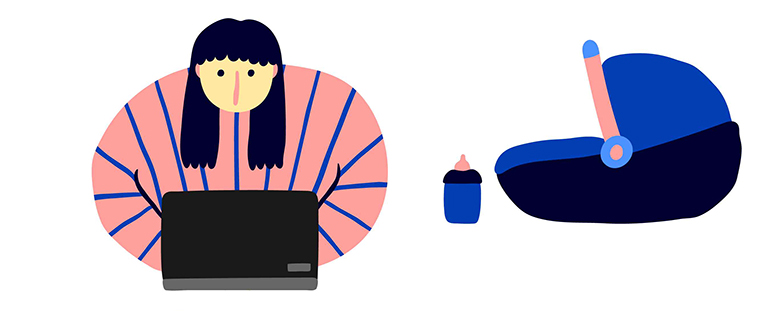Editor’s note: This excerpt comes from the new issue of the Community College Journal, the award-winning flagship publication of the American Association of Community Colleges.

A spotlight has been put on the struggles of parent-students during the pandemic. But they were already struggling before Covid-19 closed campuses. Nicole Lynn Lewis, CEO of Generation Hope and author of “Pregnant Girl: A Story of Teen Motherhood, College, and Creating a Better Future for Young Families,” discusses her own struggles and how colleges can better support parent-students.
You entered college when your daughter was an infant. Starting college is already a stressful experience. As a new mother, how was that stress multiplied?
New moms are often in a fog when it comes to caring for a newborn baby. You’re not getting good sleep. You’re trying to figure out a rhythm in your day. It’s an amazing time, but it’s also a really exhausting time.
As a young mother with few resources, it’s even more stressful. My daughter was barely three months old when I started as a freshman at William & Mary, and I was definitely feeling the weight of everything. I was sleep-deprived, still adjusting to her schedule, and just trying to find a place to pump milk on campus was a daunting task.
On top of all of that, I was overwhelmed with adapting to the rigors of college, which was so different from high school, and I didn’t have a program to help me. I was truly on my own. Because I was commuting, I didn’t have a resident advisor to go to for advice, and even my orientation guide on the first day wasn’t sure what to do with me because I didn’t fit the mold of a traditional freshman.
I had to learn the layout of the campus on my own and try to pick the right classes without input from staff or other students. I was commuting 150 miles to get to and from campus, sometimes spending four hours in the car. It was difficult to make friends because I couldn’t participate in the social life on campus. Starting out as a freshman was an isolating, stressful time as a mother and as a student.
Generation Hope helps teenage mothers and fathers with financial assistance and mentoring. It also helps ensure their children are safe and healthy. How important is it to take that bit of stress and worry off parents?
You can’t concentrate in class if you’re worried about your child’s own learning or whether you can afford dinner for your family that night. That’s just the reality, and I think any parent can understand that. There is a powerful, symbiotic relationship between a parent’s success and their child’s success. So, it’s critical that we provide support through a two-generation approach, which means we’re considering and addressing the needs of both parents and children together.
That’s what we do at Generation Hope every day. We not only support the whole student, but we also support the whole family. We help parents access high-quality childcare, provide assessment and screenings to identify growth areas for little ones, bring brand new books into the home to build their libraries, convene monthly dinners for parents to support each other, connect them to resources in the community to ensure their basic needs are met, and more. This is on top of the financial and emotional supports that we provide to parents to ensure that they graduate. Whole-family models can be game-changing for parenting students.
How has the pandemic exacerbated the challenges that parent-students already face?
When I was in college 20 years ago, I was just trying to make it through the next 24 hours. Food was scarce, housing was unstable, childcare was always something I had to piece together because I couldn’t afford it. Unfortunately, not much had changed for parenting students when the pandemic began in 2020. The Hope Center for College, Community, and Justice surveyed parenting students before Covid-19 and found that more than half were food insecure in the prior 30 days, and nearly 70% were housing insecure in the previous year.
Again, this was before the pandemic. While we have seen so many people struggling over the past year, it’s really important for those working in higher ed to know that this group of students, in particular, was already in crisis, and all of the challenges that they were trying to overcome were heightened by the virus and its many impacts. Student parents are experiencing layers upon layers of difficulty right now — from housing insecurity to racial discrimination (student parents are more likely to be students of color) to unemployment to loss of childcare — and yet they’re largely invisible to institutions and policymakers. Our economic recovery depends on our ability to really see this population and invest in their success.





